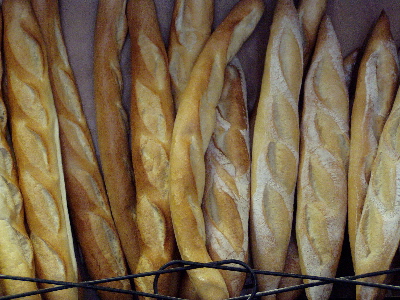Facts About Baguette
A baguette is a long, thin loaf of French bread renowned for its crisp crust and simple ingredients. Typically, a baguette has a diameter of about 5 to 6 cm and can extend up to 65 cm in length, although some may reach up to a meter. Its history is somewhat unclear, but it is believed to have evolved over time with influences such as the popularity of stick-like bread in France, the introduction of new types of flour, steam oven baking techniques, and a formal definition in 1920.
The word "baguette" means "wand" or "stick" in French and was officially used to describe this bread in 1920. Although the baguette is now a symbol of French culture, long loaves of bread were associated with France even before its official naming. The traditional French baguette is made from wheat flour, water, yeast, and salt, with some variations incorporating flours like broad bean or soy flour. Artisanal bakers might add pre-ferments or different grains to impart more complex flavors to the bread.
In France, there are several types of long loaves, including the "bâtard" or torpedo loaf, the "flûte" or "parisienne" the "ficelle" and the "miche" or "boule." Baguettes are versatile and can be used for sandwiches, served with pâté or cheese, or enjoyed with butter and jam as part of a continental breakfast. The dough is shaped using folding and rolling techniques and then baked in special pans or directly on the hearth of a deck oven.
While the traditional baguette is a staple of French culture, variations of it are found worldwide. For instance, the Vietnamese "bánh mì" uses rice flour, North American bakeries offer whole wheat and sourdough baguettes, and some recipes include ingredients like milk, butter, sugar, or malt extract to achieve different flavors. Despite these variations, the baguette remains a beloved and iconic bread cherished in diverse culinary traditions.

 Spain
Spain